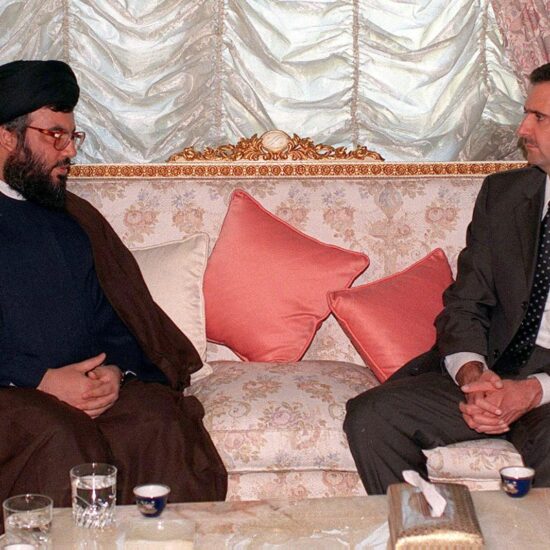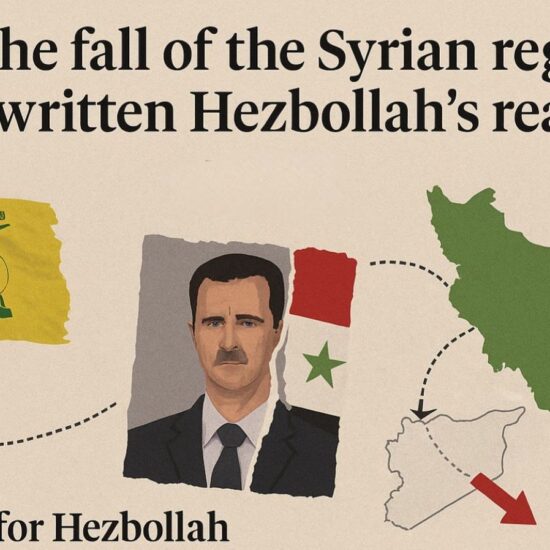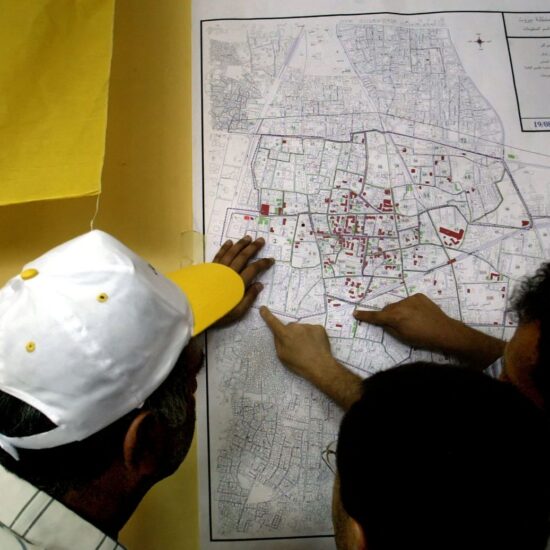
As Syria enters a new era marked by the lifting of sanctions, the question arises: how will this shift impact Lebanon—a country still uncertain about its own future?
In a striking reversal of long-standing policy, US President Donald Trump has announced the lifting of American sanctions on Syria, a move signaling renewed engagement with Damascus just months after the ouster of former leader Bashar al-Assad. Speaking during a visit to Saudi Arabia, Trump described Syria’s new leadership under President Ahmed al-Sharaa as holding “an extraordinary opportunity” to bring peace and stability to the war-torn country. The announcement came after Trump’s historic meeting with Sharaa — a one-time jihadist and former adversary of U.S. forces — marking the first face-to-face between Syrian and American leaders in a quarter century.
The landmark encounter, held alongside Saudi Crown Prince Mohammed bin Salman ahead of a Gulf Cooperation Council summit, underscores a dramatic pivot in US foreign policy. Trump, who called Sharaa a “tough guy” with a “very strong past,” said the sanctions rollback would give Syria “a chance at greatness.” For many Syrians, the televised images of their president flanked by the leaders of the US and Saudi Arabia were seen as a sign that 15 years of international isolation may finally be ending.
The European Union is poised to follow Washington’s lead, with EU diplomats confirming a preliminary deal to lift most economic sanctions on Syria. The move, expected to be finalized by foreign ministers in Brussels, would reintegrate Syrian banks into the global financial system and unfreeze the country’s central bank assets. While core sanctions on arms sales and individuals linked to past human rights abuses will remain, the shift reflects what Syrian Foreign Minister Asaad Al-Shaibani called “a regional and international will to support Syria’s rebirth.”
Sharaa, 42, welcomed the American move in a televised speech as a “historic and courageous decision” that would ease public suffering and lay the groundwork for national reconstruction. He cautioned, however, that the path ahead would be long. In Damascus, the mood was celebratory, with stalls near the Umayyad Mosque now selling both Syrian and Saudi flags — a tribute to Riyadh’s role in brokering the Trump-Sharaa meeting. As international recognition grows, Syria’s new leadership faces the monumental task of rebuilding a fractured nation while managing the legacy of a brutal civil war.
History of sanctions
Sanctions against Syria stretch back decades, beginning with the US designating the country a “State Sponsor of Terrorism” in 1979. This early move brought an arms embargo and restrictions on financial aid. Tensions escalated in 2004 when the US introduced additional economic sanctions, limiting trade and further isolating Syria’s financial system.
The outbreak of Syria’s civil war in 2011 marked a turning point. As the Assad regime violently cracked down on protests, the US and others expanded their sanctions. Measures included freezing Syrian government assets abroad, banning US investments, and blocking petroleum imports. Washington also targeted individuals linked to the regime and designated groups like Hayat Tahrir al-Sham (HTS)—formerly connected to al-Qaeda—as terrorist organizations. A $10 million reward was also placed on the capture of Syria’s current leader, al-Sharaa.
These sanctions were primarily motivated by human rights concerns, particularly the regime’s use of chemical weapons, and by Syria’s association with terrorism. Despite the fall of Bashar al-Assad in late 2024, many of these sanctions have remained in place due to lingering concerns over security and governance.
Following Assad’s departure, some easing occurred. The US issued a temporary six-month license (GL 24) in January 2025, allowing limited transactions with Syrian institutions and exempting personal remittances, although most US banks remained cautious. The EU lifted select restrictions in sectors like energy and transport and allowed banking transactions tied to humanitarian aid. The UK adopted a similar path but went further, lifting more financial sector restrictions and removing sanctions from the Syrian Central Bank and other entities.
Despite these moves, core international sanctions remain. UN Security Council Resolution 1267 continues to impose asset freezes and travel bans on HTS and al-Sharaa, with delisting requiring broad international consensus—a process stalled by Russian opposition.
Efforts to fully lift US sanctions are complicated by legal mechanisms. Sanctions imposed through presidential orders can be reversed by the president, but those passed by Congress, like the Caesar Act (renewed in 2025), require new legislation to repeal. While the Act allows for waivers and temporary suspensions based on national security or progress on US demands, only full repeal would offer the certainty needed for long-term investment.
Policymakers are debating whether the current piecemeal and conditional approach is the most effective. Some argue that a clean slate—with all outdated laws repealed and replaced by a targeted, transparent system—might better support Syria’s recovery while maintaining leverage.
What happens now?
According to some analysts, easing sanctions offers limited short-term relief, potentially boosting small-scale agriculture and services, but a broad economic revival remains unlikely. It may signal the start of Syria’s reintegration into regional markets, encouraging some trade and tourism ties, though progress depends on unresolved sanctions and political dynamics. Analysts view the move as a strategic gesture tied to regional negotiations or domestic political interests.
For political analyst Sam Mnassa, the lifting of sanctions on Syria is not just a bureaucratic or economic measure—it’s the gateway to a fundamental geopolitical shift. “The issue isn’t the Caesar Act or American sanctions. These are logistical details,” he told NOW. “The essence lies in the political process of lifting sanctions, which marks the end of one era in Syria and the beginning of another.”
Mnassa sees this move as Syria’s quiet departure from the Iranian-led “axis of resistance” toward alignment with Gulf countries. The goal, he explains, is to stabilize a new political order in Damascus—one more open to Arab and possibly even Western engagement.
In practical terms, the economic benefits of this political thaw may begin to materialize within a year. Aid from Arab states, particularly the Gulf, is expected to arrive faster than Western investments, which are more cautious and conditional. Qatar, for instance, is already paying public sector salaries in Syria (excluding defense and foreign ministries), hinting at growing Arab involvement in Syria’s recovery.
Lebanon stands to benefit from this recovery—if it plays its cards right. A stabilizing Syria means fewer refugees and renewed cross-border economic activity. “Lebanese contractors, entrepreneurs, and small and medium businesses could find work in Syria’s reconstruction,” Menassa noted. “This would help revive Lebanon’s own stagnant economy, but only if we have a functioning government ready to capitalize on these opportunities.”
However, Lebanon’s deep political paralysis threatens its ability to benefit. Mnassa warns that while individual Lebanese may profit from Syria’s opening, the Lebanese state may miss out altogether. “Lebanon hasn’t taken a clear political decision about where it stands regionally. Is it aligned with Iran or Saudi Arabia? What about its relationship to the West? Is it stuck in neutral?” he asked. “Without that clarity, without real reform and rule of law, foreign investors won’t come.”
The issue of Syrian refugees in Lebanon—estimated at nearly two million—could also be reshaped by Syria’s rehabilitation. “With better conditions in Syria, some may return,” Mnassa said. “Of course, not all can or should, especially those at risk.”
Still, Mnassa cautions against simplistic or xenophobic narratives. “We need to be honest—many Lebanese rely on Syrian labor. But we also need to recognize the immense strain on Lebanon’s infrastructure, electricity, water, and social services.”
Ultimately, he argues, Lebanon’s fate is closely tied to Syria’s. But while Syria appears to be carving a new regional role for itself, Lebanon remains adrift. “The question isn’t whether Syria will play a bigger role in the region than Lebanon–because that’s highly plausible,” Mnassa said. “The question is whether Lebanon can define its own role, reform its institutions, and regain the trust of its people and the world.”
The easing of sanctions opens a new chapter for Syria, but significant economic and political challenges remain. Recovery will likely be slow and dependent on regional and internal dynamics.
For Lebanon, Syria’s gradual reopening offers potential economic opportunities and relief on refugee pressures. Yet Lebanon’s own political and economic instability may limit its ability to benefit. How Lebanon positions itself amid these changes—and whether it undertakes needed reforms—will shape its role in a shifting regional landscape.








